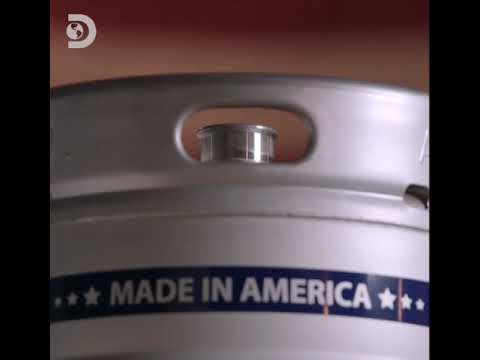what are the best screen printing ink for plastic cups.
When it comes to branding your business, one of the most effective ways to do so is by using custom printed plastic cups. These cups not only serve as a functional item for your customers, but they also act as a walking advertisement for your brand. However, in order to achieve the best results, it is important to use the right type of screen printing ink for plastic cups. In this article, we will discuss the best screen printing ink options for plastic cups and how they can benefit your business.
Water-Based Inks
Water-based inks are a popular choice for printing on plastic cups. These inks are eco-friendly and do not contain any harmful chemicals, making them safe for both the environment and your customers. They also have a soft hand feel, meaning the print will not feel stiff or rough on the cup. Water-based inks are also known for their vibrant colors, making your branded cups stand out and catch the attention of potential customers.
- Position Drying Equipment: Place your screen-printed substrate in a drying chamber or use a conveyor dryer designed for water-based inks. The drying equipment should provide consistent heat and airflow to aid in the drying process.
- Adjust Temperature and Speed: Set the temperature and conveyor speed on the drying equipment according to the ink manufacturer’s recommendations. The settings may vary depending on factors such as the type and thickness of the ink, the substrate, and the drying equipment used.
- Start the Drying Process: Turn on the drying equipment and start the drying process. The combination of heat and airflow will help evaporate the water content in the ink and cure it.
- Monitor the Drying Process: Continuously monitor the drying process to ensure that it is proceeding as expected. Ensure that the entire printed area is exposed to consistent heat for an appropriate duration.
UV Inks
UV inks are another great option for printing on plastic cups. These inks are cured using ultraviolet light, resulting in a durable and long-lasting print. They are also resistant to fading and scratching, making them ideal for cups that will be used multiple times. UV inks are also available in a wide range of colors, allowing you to create eye-catching designs for your branded cups.
- Position UV Curing Equipment: Place your screen-printed substrate under a UV curing unit or conveyor system equipped with UV lamps. Ensure that the distance between the lamps and the substrate is set according to the manufacturer’s recommendations for proper curing.
- Adjust Lamp Intensity and Exposure Time: Set the UV lamp intensity and exposure time according to the ink manufacturer’s recommendations. The settings may vary depending on factors such as the type and thickness of the ink, the substrate, and the curing equipment used.
- Start the Curing Process: Turn on the UV lamps and start the curing process. The UV light will initiate the photopolymerization reaction in the ink, causing it to cure and harden rapidly. Ensure that the entire printed area is exposed to UV light evenly.
Solvent-Based Inks
Solvent-based inks are a popular choice for printing on plastic cups due to their versatility. These inks can be used on a variety of materials, including plastic, and are known for their durability. They are also resistant to water and chemicals, making them a great option for cups that will be used in outdoor or high-traffic environments. However, it is important to note that solvent-based inks do contain chemicals and should be handled with caution.
intricate designs and photographs, making them a great choice for creating branded cups with detailed artwork.
How to cure:
Solvent-based inks can be cured using one of the following methods:
a. Heat curing (oven or heat gun): Heat is applied to the printed substrate to evaporate the solvent and accelerate the curing process. The temperature and duration depend on the ink and substrate, so consult the ink manufacturer’s recommendations.
b. Air drying: In some cases, solvent-based inks can be left to air dry at room temperature. This process is slower than heat curing and may not be suitable for all applications.
Proper Ventilation:
Ensure that the curing area has adequate ventilation to dissipate solvent fumes and prevent the accumulation of potentially flammable vapors.
Temperature and Time:
When using heat curing, follow the recommended temperature and time settings provided by the ink manufacturer. Typically, curing temperatures range from 160°F to 300°F (70°C to 150°C), and curing times can vary from a few minutes to several hours, depending on the ink and substrate.
Testing:
It’s essential to perform curing tests on a sample or scrap material before applying the solvent-based ink to your final product. This helps ensure that the curing process won’t damage the substrate and that the ink adheres properly.
Quality Control:
Monitor the curing process to ensure that the ink is curing evenly and that the final product meets quality standards.
Benefits of Using the Right Screen Printing Ink for Plastic Cups
Using the right type of screen printing ink for plastic cups can have a significant impact on the success of your branded cups. By choosing the best ink for your specific needs, you can ensure that your cups are durable, vibrant, and long-lasting. This will not only make a good impression on your customers, but it will also increase the chances of your branded cups being used multiple times, resulting in more exposure for your brand.
Conclusion
In conclusion, when it comes to printing on plastic cups, it is important to choose the right type of screen printing ink. Water-based, UV, and solvent-based are all great options for creating durable and vibrant prints on plastic cups. By using the best ink for your specific needs, you can create eye-catching branded cups that will help promote your business and leave a lasting impression on your customers. Systematic Automation recommends Nazdar or Marabu as a source for your inks.





